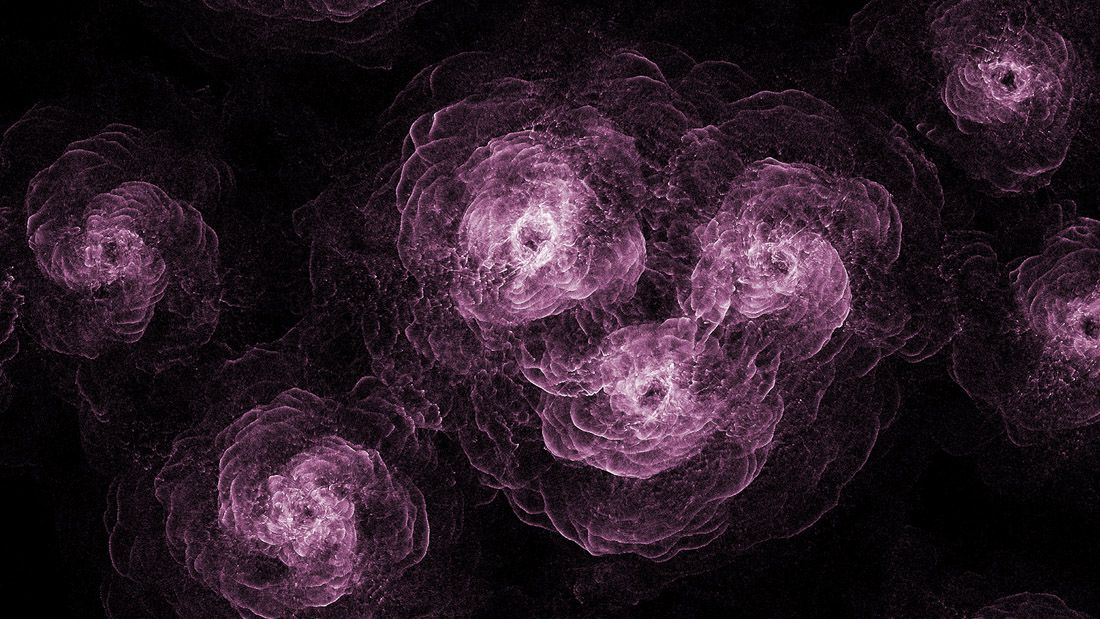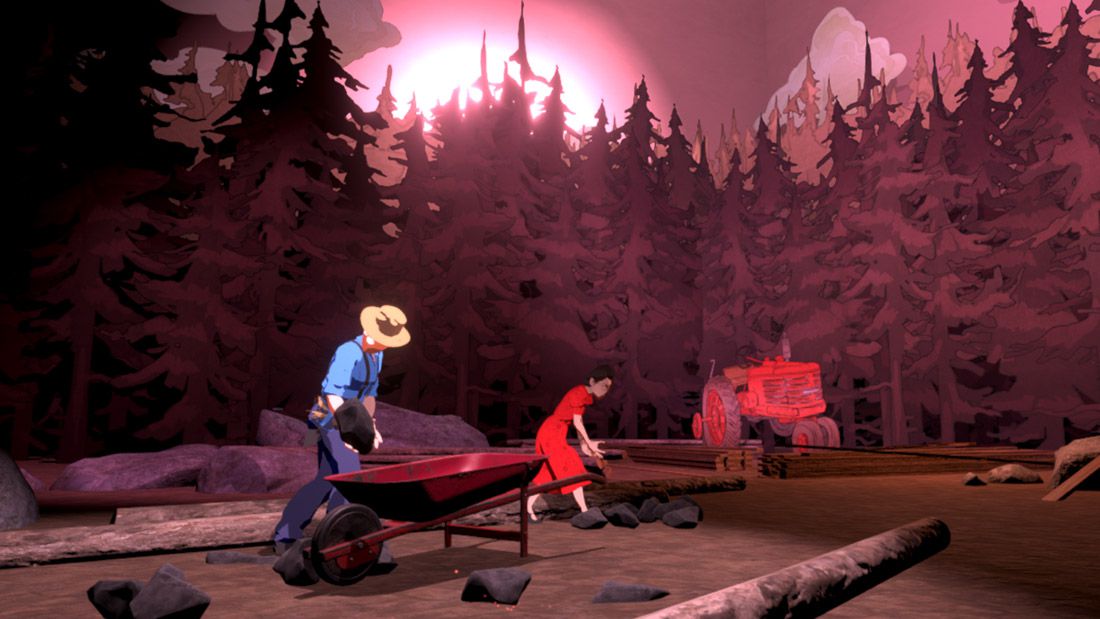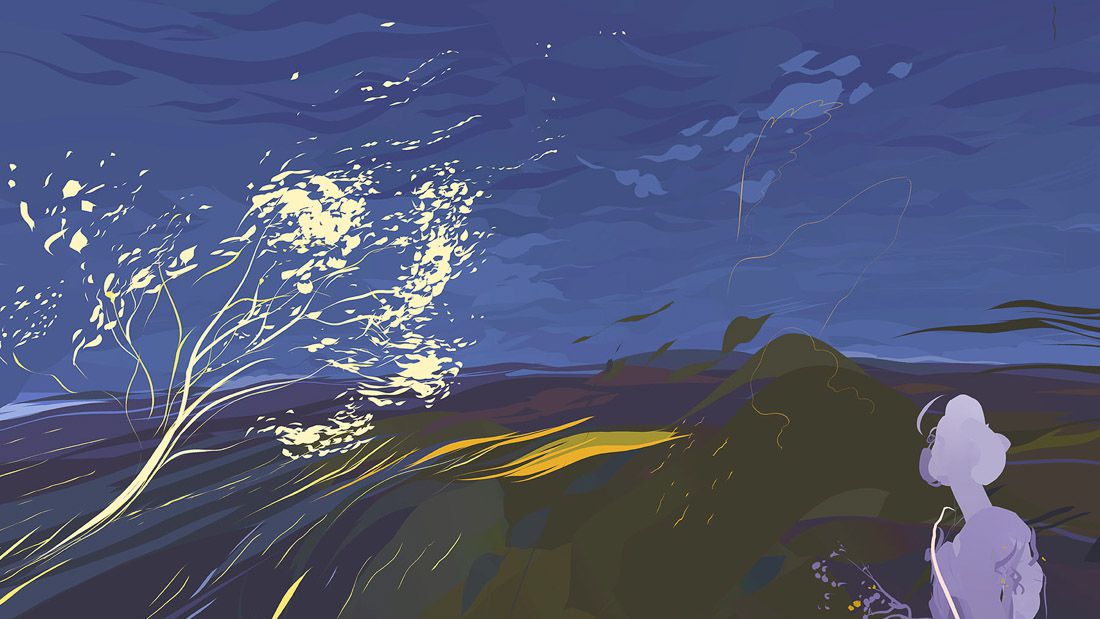The Sundance Film Festival’s experimental New Frontier show has gotten so big and elaborate that it’s becoming its own miniature festival — which means making hard trade-offs about what to see. So I missed some exciting-sounding projects in 2020. Sorry, Chomsky vs. Chomsky: First Encounter, the Noam Chomsky-powered AI. It’s not you, it’s me, sci-fi mushroom simulator Hypha. And the timing just didn’t work out, anti-capitalist live-streamed virtual reality theater Anti-Gone.
Sundance and other virtual or augmented reality-heavy art events might eventually have to grapple with this issue. Projects are getting longer (10 to 30 minutes, versus five to 10 minutes a few years ago), and many can only handle one or two people at a time. For context, the film festival had over 120,000 attendees. Even if only a fraction visit New Frontier, that means a lot of planning or long waits. It’s part of a bigger VR and AR scaling problem — headsets are niche, relatively rare devices that enthusiasts are still figuring out how to build a medium around.
Despite this, New Frontier had more fun, weirder projects than ever. Here were a few of my favorites.

Image: Sundance Institute
(Diego Galafassi)
The medium: Magic Leap mixed reality headsets with biometric sensors.
The premise: Four people put on mixed reality headsets and step into an empty space. Sensors estimate when they’re breathing, then visualize the air they exhale as a cloud of light — mixing with the breaths of the other participants and then drifting into the ether. And the whole system is set in a larger context by some soothing narration about air (and Earth’s larger ecosystem) from Zazie Beetz.
Why it’s good: Breathe is a perfect fit for mixed reality glasses and a large-scale setting like a festival. Visually, it’s simple but elegant, working around current-generation headsets’ limited field of view. It connects participants in an effective but quiet, low-stakes way during an event that’s full of sensory overload. And for outsiders looking at the stage, it’s intriguing without giving too much away about the experience.

Image: Sundance Institute
(Randall Okita)
The medium: Virtual reality with limited hand interactions.
The premise: Filmmaker Randall Okita slowly pieces together the life of his grandfather. Yonezo Okita was a Japanese immigrant who arrived in Canada as a teenager, married and started a family, ran a thriving farm — and then had it all ripped away with the start of World War II, when the government sent him and many other Japanese-Canadians to internment camps. This unfolds through a series of vignettes that combine animation, virtual copies of real photographs, and simple interactions like taking a photo or throwing a horseshoe.
Why it’s good: “Empathy” in VR has gone from a buzzword to a sarcastic pejorative, following a lot of experiences simulating homelessness, refugee camps, or war zones. Book of Distance has some superficial similarities with these. But instead of trying to elicit empathy, it’s a story about empathy — Okita’s yearning to better understand a man he loved but in some ways didn’t know.

Image: Sundance Institute
(Matthew Niederhauser, Wesley Allsbrook, Elie Zananiri, and John Fitzgerald)
The medium: Two-person virtual reality experience with a little physical interaction.
The premise: It’s tough to explain. You’re a semi-human figure exploring a surreal pastel landscape, while another participant does the same thing — until ultimately you connect.
Why it’s good: It’s just gorgeous. The world (which was drawn in VR art application Quill) is an impressionist painting come to life. Your body is stripped down to something like a living circulatory system made of slender, animated brush strokes. It would probably work on home VR headsets, but like movies that should only be seen in theaters, it benefits a lot from the gravitas of a physical installation with another human being in the same space.
Image: Sundance Institute
(Pierre “Pyaré” Friquet)
The medium: Waterproof VR headset, snorkel, and swimming pool. Yes, really.
The premise: Don a (real) swimsuit and flotation belt, strap on a VR headset that is also a snorkel mask, then float weightlessly through a surrealist outer space trip loosely inspired by the Georges Méliès film A Trip to the Moon.
Why it’s good: Spaced Out marries eerie abstract imagery, like scenes that evoke floating down a giant sci-fi cathedral, with a unique kind of VR system. (Disclosure: Ballast, which provided the VR snorkel system, was co-founded by former Vox Media employee Stephen Greenwood.) It doesn’t feel physically otherworldly — it feels like being in a swimming pool — but there’s a real sensory deprivation effect that heightens the intensity.
Image: Sundance Institute
(Brian Andrews)
The medium: Old-fashioned 360-degree VR animation.
The premise: A humanoid spider raises her young in a dangerous world.
Why it’s good: The art. Hominidae’s half-sketched, semi-translucent style creates a sense of pathos while somehow dialing up the body horror of what is already effectively a Dark Souls monster. It’s short and completely wordless, and it would still be weird and interesting outside VR. But the headset forces viewers to focus completely on both its sad moments and its skin-crawling ones — which, at this point, is one of the best reasons to make a VR movie.
Image: Sundance Institute
Most inexplicably compelling: Scarecrow
(Jihyun Jung, Sngmoo Lee, Taewan Jeong, Cooper Yoo)
The medium: Full-body virtual reality — plus a physically present dancer, a thermal hand plate that simulates touching hot and cold objects, and a scanner that digitizes an image of your face. It’s a lot.
The premise: A New Frontier pamphlet gave Scarecrow a one- or two-sentence synopsis about reawakening creativity in artists, or something similarly vague. This turned out to be nonsense, because Scarecrow is about dancing with a scarecrow whose heart has been stolen by a large mythological bird.
Why it’s good: If Scarecrow weren’t too impossibly elaborate to scale, I’d feel a little bad spoiling the premise, because the descriptive bait-and-switch was part of its charm. You go in expecting a somber meditation on art, and suddenly everything is a puppet show, a scarecrow is maybe in love with you, and by the time he’s hugging you and your face has been projected into the sky, you’ve just surrendered to the creators’ bizarre narrative logic. It’s fun, earnest, and a lot less frenetic than that description suggests.
And when you’re spending a week shuttling across a city in subfreezing temperatures, it just feels nice to get a hug, you know?